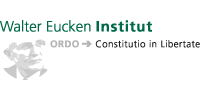Lowering labor taxes is essential to EU competitiveness
Following Mario Draghi’s report on “The Future of European Competitiveness,” the European Union has become more attentive to the challenges posed by the lagging productivity growth that stems from declining innovation. The primary thrust of the report is to establish a new, Brussels-centered industrial policy that includes substantial subsidy programs, policy harmonization and tariffs designed to shield European industries from external competition.
The report’s brief acknowledgment that Europe’s sluggish labor market is also a barrier to future growth, along with its recommendation for a “coordinated reduction of labour income taxation,” has been underdiscussed. Which is a pity.
Europe’s high wage taxes erode the value of human capital, resulting in a less dynamic labor market, smaller rewards for productive entrepreneurship and lower levels of material well-being. Reducing tax rates – not merely shifting taxes from one source to another – can be a crucial component of a future in which European workers lead the bloc out of its present stagnation.
Work matters for growth
There is significant variation in tax systems among large industrialized countries in the Organisation for Economic Co-operation and Development (OECD). Within this group, for example, the average employee in Denmark works about 650 annual hours less than their peer in Greece and 750 hours less than in Mexico, which is equivalent to over 81 and 90 eight-hour workdays per year, respectively. While many factors contribute to these differences, it is noteworthy that taxes account for much of the variation in employment levels and hours worked across countries.
Since labor is a critical component of all economic activity, excessive taxation depresses overall economic output.
High taxes on wages undermine incentives to work, leading people to put in fewer hours, take longer vacations, retire earlier and spend more time on nonmarket activities such as housework and childcare. Since labor is a critical component of all economic activity, excessive taxation depresses overall economic output. Furthermore, high tax rates discourage entrepreneurship and the formation of new businesses, both of which are essential for long-term productivity growth.
In a 2004 paper, “Why Do Americans Work So Much More than Europeans?,” Nobel Prize-winning economist Edward Prescott concluded that “virtually all the large differences between the U.S. labor supply and those of Germany and France are due to differences in tax systems.” A large body of subsequent research has built upon Prescott’s findings, confirming the strong negative relationship between wage taxes and time devoted to work. For instance, in a summary of the literature, Scott Hodge and Bryan Hickman state that “most of the relevant economic research has demonstrated the negative relationship between the tax wedge and employment.” The tax wedge represents the difference between total labor costs for employers and the net income received by employees after taxes.
Facts & figures
Illustrating the relationship between taxes and work, the figure above presents the average hours worked across 37 Organisation for Economic Co-operation and Development (OECD) countries alongside the total effective tax rate for average childless workers in 2019, the latest year with available data on both measures. The trend line accounts for approximately 26 percent of the variation, indicating that a 1-percentage-point reduction in the tax wedge could lead to an increase of 50 hours worked on average, equivalent to about six workdays.
Taxes on workers vary widely across countries
An average single worker with no children in OECD countries faces an income and consumption tax-inclusive average tax rate of 41 percent. In the 22 EU countries that are also part of the OECD, the average tax burden rises to 47 percent, while in the U.S. it stands at 32 percent. This difference translates to about $12,000 less in annual taxes paid by an American compared to their counterparts in European countries.
Authorities in Belgium, Germany, Austria and France claim more than half of their workers’ pretax earnings.
These estimates build on data from a recent Cato Institute report that calculates a more comperehensive tax burden on labor, including income taxes, employee payroll taxes, employer payroll taxes and consumption taxes. In addition to the direct tax cost of income taxes, consumption taxes also diminish the purchasing power of take-home wages. The tax wedge is calculated by dividing the total amount of taxes paid by the total labor costs, which include both wages and consumption taxes.
A single worker making the average wage in the OECD earns about $70,000 before taxes are imposed (consumption tax-inclusive gross labor costs). This average worker pays $28,851 in taxes to the government, which breaks down to $8,660 in income taxes, $5,384 in employee payroll taxes, $9,245 in employer payroll taxes and $5,562 in value added tax, or VAT, leaving them with $41,925. Consequently, this worker retains approximately 60 percent of the total earnings.
The next chart shows the total tax wedge average for single workers in individual countries. Authorities in Belgium, Germany, Austria and France claim more than half of their workers’ pretax earnings. Columbia, Chile and Mexico, in contrast, allow workers to retain more than 75 percent of their pretax earnings.
Facts & figures
While it is clear that average tax rates on typical workers can have dramatic effects on labor, elevated marginal tax rates on high-income earners also come with unique economic costs. Top marginal tax rates – the tax paid on the next dollar of income earned – reduce incentives for the long hours and skills acquisition that drive entrepreneurship, business start-ups and rapid product scaling.
And conversely, reducing top marginal rates can boost entrepreneurial activity and overall economic dynamism. A study found that cutting a sole proprietor’s marginal tax rate from 50 percent to 33 percent could lead to an average increase in business receipts of about 28 percent.
Rather than leaning further into central planning, protectionism and debt-financed initiatives, Europe could focus on free markets, reduced public expenditures and lower taxes.
Santiago Calvo Lopez and Diego Sanchez de la Cruz report that effective marginal tax rates for top-income earners average 58 percent across all EU member states. As many as 21 of the 27 EU member states impose top marginal tax rates above 50 percent, and high-income earners in six countries – Belgium, Slovenia, Portugal, Finland, Sweden and France – face rates exceeding 70 percent.
Scenarios
More likely: Business as usual
The Draghi report’s emphasis on waning productivity as the core issue behind Europe’s economic malaise is a welcome return to focusing on what truly matters for long-term prosperity. Unfortunately, the report’s recommendations emphasize government-driven interventions funded by hundreds of billions of euros in additional debt. Many European countries already face significant fiscal pressures, making the assumption of more debt increasingly precarious.
Despite the economic (and longer-term political) benefits of spending cuts, policymakers have historically opted for tax increases when confronted with persistent budget deficits. These tax hikes often are counterproductive, as they tend to slow economic growth, reduce revenue collections and lead to increased welfare spending during economic downturns.
As highlighted above, higher taxes also have profound negative effects on Europe’s labor market. More debt and higher taxes will continue to stifle Europe’s productivity and dampen labor market dynamism.
Unlikely: Paradigm change
The European Commission could change tack and prioritize removing government barriers to innovation and work instead of pursuing more debt and economic intervention. This approach would involve lowering taxes on labor and capital income, particularly in venture capital and start-up sectors. Rather than leaning further into central planning, protectionism and debt-financed initiatives, Europe could focus on free markets, reduced public expenditures and lower taxes.
While policy for productivity growth often rightly emphasizes the tax burdens on businesses and capital, it is crucial to recognize that high labor taxes create significant disincentives to work, which cannot be offset by a more permissive capital tax regime. However, such a recognition and change in labor policy approach appears less likely in the foreseeable future.
This report was originally published here: https://www.gisreportsonline.com/r/eu-taxes-labor-europe-competitiveness/































